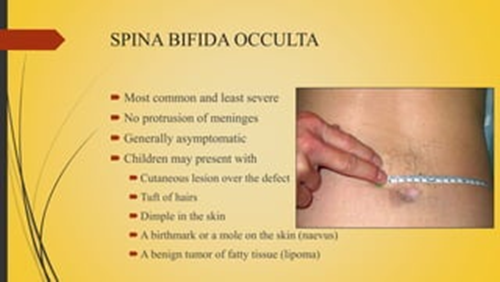A parent asks a nurse about toys to provide for a 10-month-old infant. Which of the following toys should the nurse suggest?
Coloring book with crayons
Large-piece puzzles
Crib gym
Put-in take-out toy
The Correct Answer is C
A. Coloring book with crayons:
Coloring activities with crayons are typically more suitable for older children who have developed fine motor skills and hand-eye coordination. At 10 months old, infants are still in the early stages of motor development and may not have the dexterity to hold and manipulate crayons effectively. Additionally, infants at this age are more likely to put objects in their mouths, which poses a choking hazard with crayons.
B. Large-piece puzzles:
Puzzles with large pieces can be beneficial for older children's cognitive development by promoting problem-solving skills and hand-eye coordination. However, at 10 months old, infants are still developing their motor skills and may not have the ability to manipulate puzzle pieces effectively. Puzzles with small pieces can also pose a choking hazard for infants.
C. Crib gym:
A crib gym is a suitable toy for a 10-month-old infant as it provides opportunities for visual stimulation, reaching, grasping, and hand-eye coordination development. Crib gyms typically consist of hanging toys or objects that the infant can bat at or grasp while lying in their crib or playpen. This type of toy encourages exploration and interaction while ensuring safety within the confines of the crib.
D. Put-in take-out toy:
Put-in take-out toys involve placing objects into a container and then removing them, which can be engaging for infants. However, while this type of toy may provide some entertainment for a 10-month-old, it may not offer as much visual and tactile stimulation as a crib gym. Additionally, some put-in take-out toys may have smaller parts that pose a choking hazard for infants, so careful supervision is necessary.
Nursing Test Bank
Naxlex Comprehensive Predictor Exams
Related Questions
Correct Answer is D
Explanation
A. Flaccid paralysis of lower extremities:
Flaccid paralysis refers to a weakness or loss of muscle tone in the affected muscles, leading to decreased or absent movement. This finding is not typically associated with spina bifida occulta. Instead, it is more commonly seen in more severe forms of spina bifida, such as myelomeningocele, where there is significant involvement of the spinal cord and nerves.
B. Hip dislocation:
Hip dislocation can occur in individuals with myelomeningocele due to muscle weakness, abnormal muscle tone, and joint deformities associated with spinal cord defects. However, it is not typically associated with spina bifida occulta, which usually presents with less severe spinal cord involvement.
C. Hydrocephalus:
Hydrocephalus, characterized by the accumulation of cerebrospinal fluid within the brain, is a common complication of myelomeningocele due to disturbances in the flow and absorption of cerebrospinal fluid caused by the spinal defect. It is less commonly associated with spina bifida occulta, which typically involves a less severe spinal cord defect.
D. Dimple in sacral area:
This is the correct choice. A dimple, patch of hair, or birthmark in the lower back or sacral area is a common finding in spina bifida occulta. It occurs due to the incomplete closure of the spinal column during fetal development, leading to a small defect in the vertebrae. This is often a subtle manifestation of spina bifida occulta and may not cause significant symptoms or functional impairment.

Correct Answer is D
Explanation
A. Place the infant in prone position.
This option is incorrect. Placing the infant in the prone position (lying on the stomach) could put pressure on the spinal lesion, potentially causing discomfort or complications. It's important to minimize pressure on the affected area in infants with spina bifida.
B. Cover the infant's lesion with a dry cloth.
This option is incorrect. While keeping the lesion clean and dry is important for preventing infection, simply covering it with a dry cloth may not provide adequate protection. Proper wound care techniques, such as using sterile dressings and cleaning the area with prescribed solutions, are typically necessary to prevent infection and promote healing.
C. Feed the infant through an NG tube.
This option is incorrect. While infants with severe forms of spina bifida may have difficulty feeding due to associated complications, such as difficulty swallowing or weak sucking reflexes, feeding through a nasogastric (NG) tube is not a standard intervention for spina bifida itself. Feeding methods would depend on the specific needs and abilities of the infant, and may involve breastfeeding, bottle-feeding, or other methods under the guidance of healthcare professionals.
D. Diapering over a low defect will keep the infant free from infection.
This option is correct. Diapering over a low defect (the opening in the spine caused by spina bifida) helps to keep the area clean and reduce the risk of infection. By properly covering the defect with a diaper, exposure to urine and feces, which can increase the risk of infection, is minimized. Additionally, regular diaper changes and proper hygiene practices are essential for preventing complications in infants with spina bifida.
Whether you are a student looking to ace your exams or a practicing nurse seeking to enhance your expertise , our nursing education contents will empower you with the confidence and competence to make a difference in the lives of patients and become a respected leader in the healthcare field.
Visit Naxlex, invest in your future and unlock endless possibilities with our unparalleled nursing education contents today
Report Wrong Answer on the Current Question
Do you disagree with the answer? If yes, what is your expected answer? Explain.
Kindly be descriptive with the issue you are facing.
